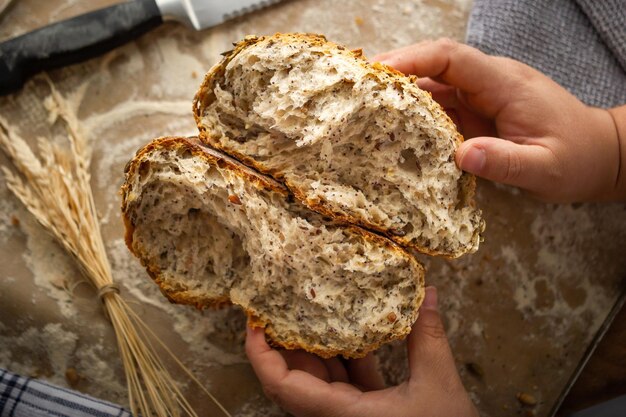Can Diabetics Enjoy Wheat Bread? Here's the Scoop
Navigating the world of diets as a diabetic can often feel like walking through a maze with your blood sugar levels serving as a strict guide. Wheat bread, often touted as a healthier alternative to white bread, raises the question: Is it actually good for those managing diabetes? To address this, let's dig into the nutritional profile of wheat bread and its impact on blood sugar, followed by some useful options for financial and educational support services available to aid healthier diet choices.
Understanding Wheat Bread and Diabetes
Wheat bread, known for its higher fiber content compared to white bread, can offer some benefits for diabetics. Fiber is crucial because it doesn't raise blood glucose levels. Instead, it helps slow down digestion, leading to a more gradual release of sugars into the bloodstream, potentially helping to maintain stable blood sugar levels.
Whole grain wheat bread is often a better option than its refined counterpart. Whole grains are minimally processed, preserving fiber, vitamins, and minerals that might be stripped away during refining. This makes them more beneficial in maintaining healthy blood sugar levels.
However, not all wheat breads are created equal. Some products labeled as "wheat bread" may actually be refined and not much different from white bread regarding sugar and carbohydrate content. Therefore, diabetics should seek out 100% whole wheat bread and check nutrition labels for low sugar and high fiber content.
Glycemic Index: Key Consideration
The glycemic index (GI) is an important factor when evaluating how foods affect blood glucose levels. Foods with a low to medium GI are better for those with diabetes as they cause a slower rise in blood sugar levels. Whole wheat bread generally has a lower GI compared to white bread, making it a potentially more diabetes-friendly choice.
Tips for Choosing the Right Bread
When shopping, consider these tips to ensure you're selecting the most suitable bread:
- Check the Label: Look for "Whole" in the ingredient list, indicating whole grains.
- Go for Higher Fiber: Aim for bread with at least 3 grams of fiber per slice.
- Low Sugar Content: Choose options with minimal added sugars.
- Mind the Portions: Watch the serving size to avoid unwanted spikes in blood sugar.
Beyond Food: Financial and Educational Assistance
Adhering to a healthy diet can sometimes become financially challenging, but several support programs can alleviate these burdens:
- SNAP (Supplemental Nutrition Assistance Program): 🍎 Assists in purchasing healthier food options.
- WIC (Women, Infants, and Children): 🍞 Provides targeted nutritional support for mothers and young children.
- Diabetes Education Programs: 📘 Offer free or low-cost educational resources to help manage diabetes effectively.
- Health Savings Accounts (HSAs): 💳 Enable setting aside pre-tax dollars for medical expenses, including dietary needs.
- Nonprofit Support: 🤲 Organizations such as Feeding America offer food assistance to those in need.
Key Financial Assistance Options 🏦
- Debt Relief Programs: Help manage outstanding medical expenses affecting budget for healthier food.
- Credit Counseling Services: Assist in budgeting and improving financial health.
- Community Action Agencies: Provide support in accessing local food programs.
Exploring these resources can significantly aid in managing the financial aspects of a diabetic-friendly diet, ensuring that health comes without a hefty bill. Balancing dietary needs with financial resources is key for maintaining both physical health and financial stability.
